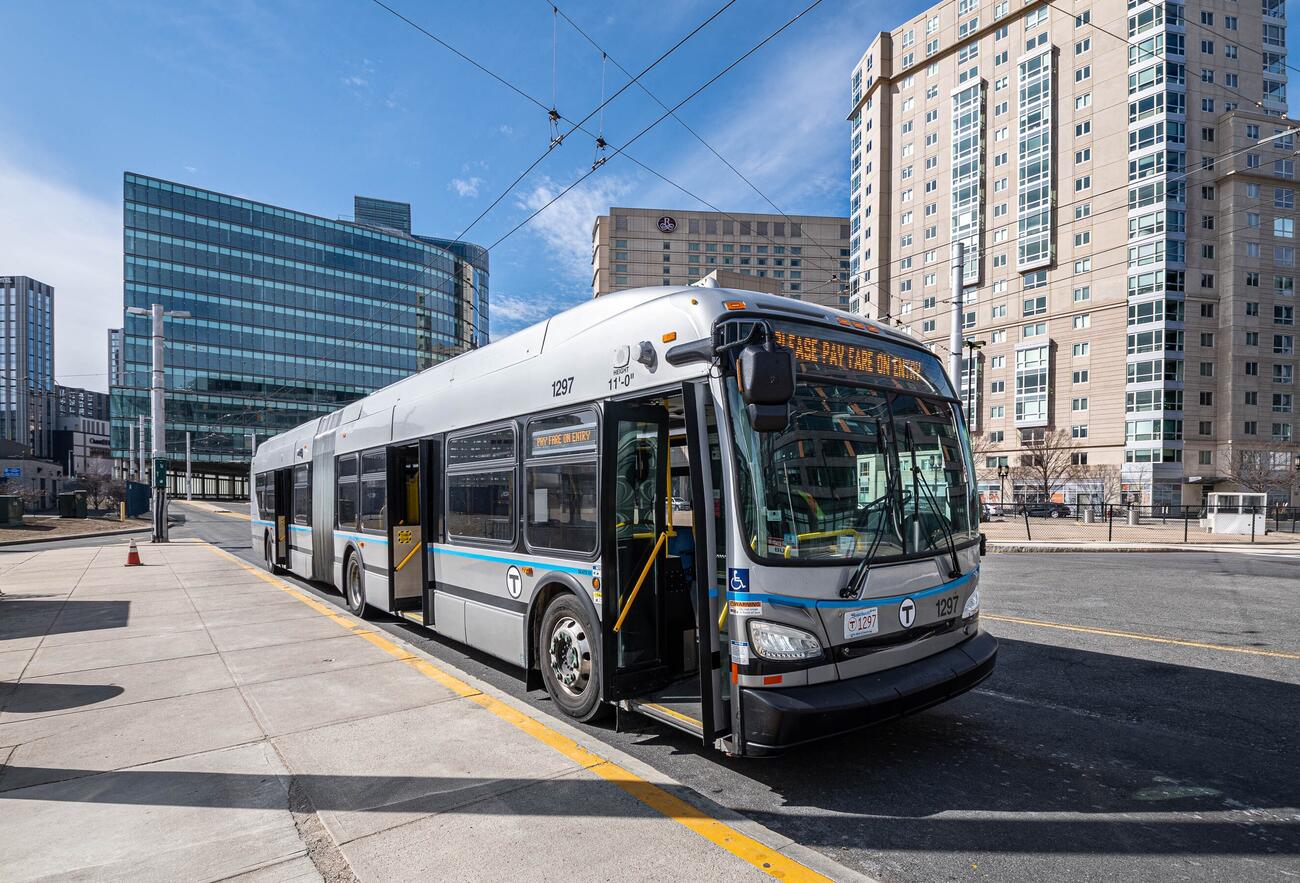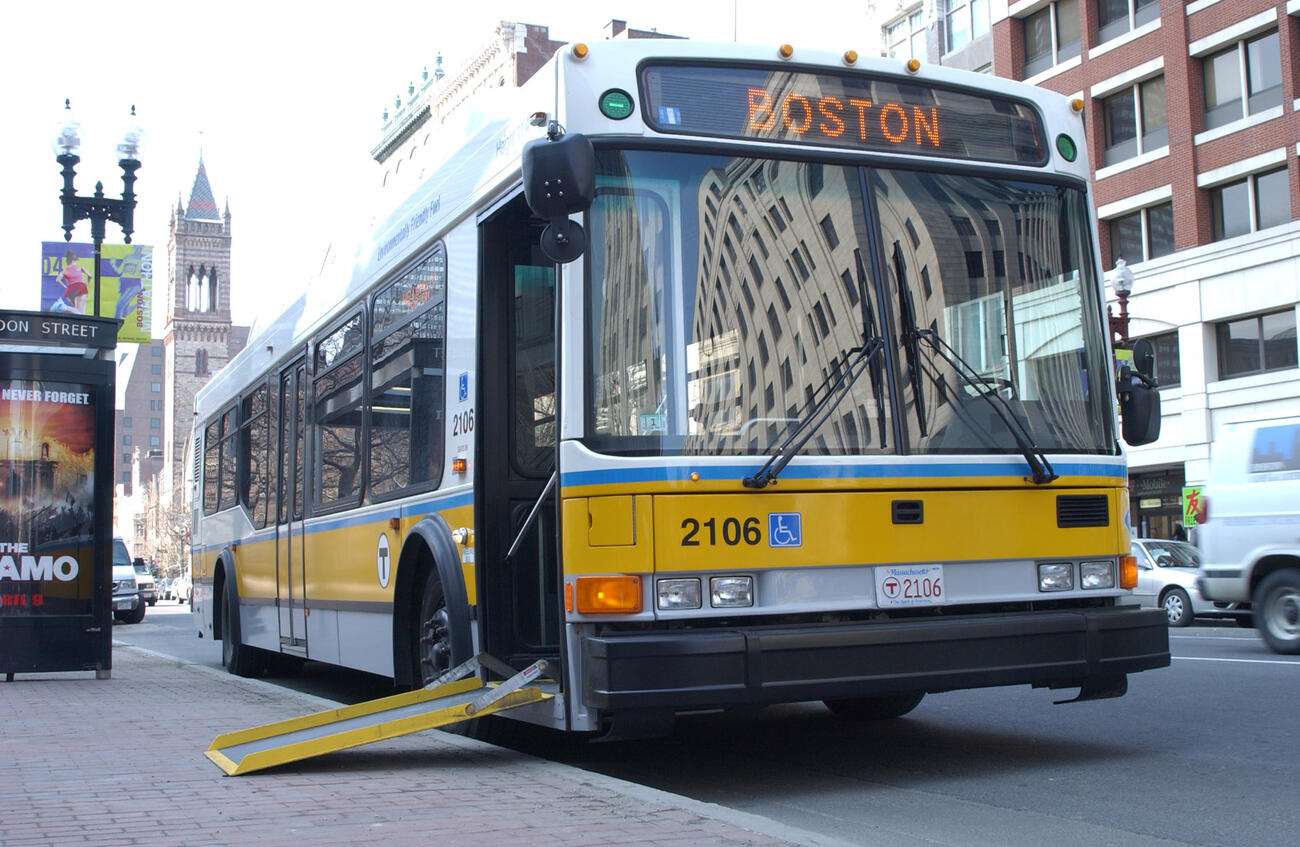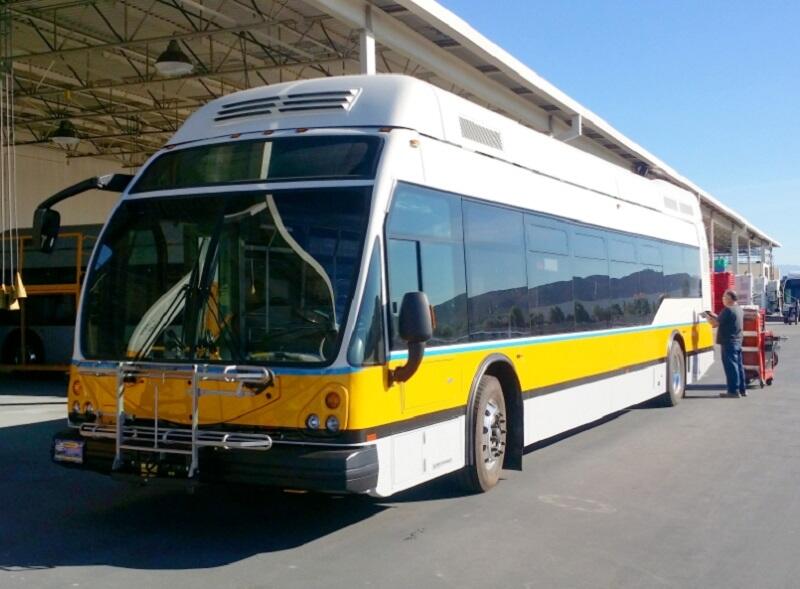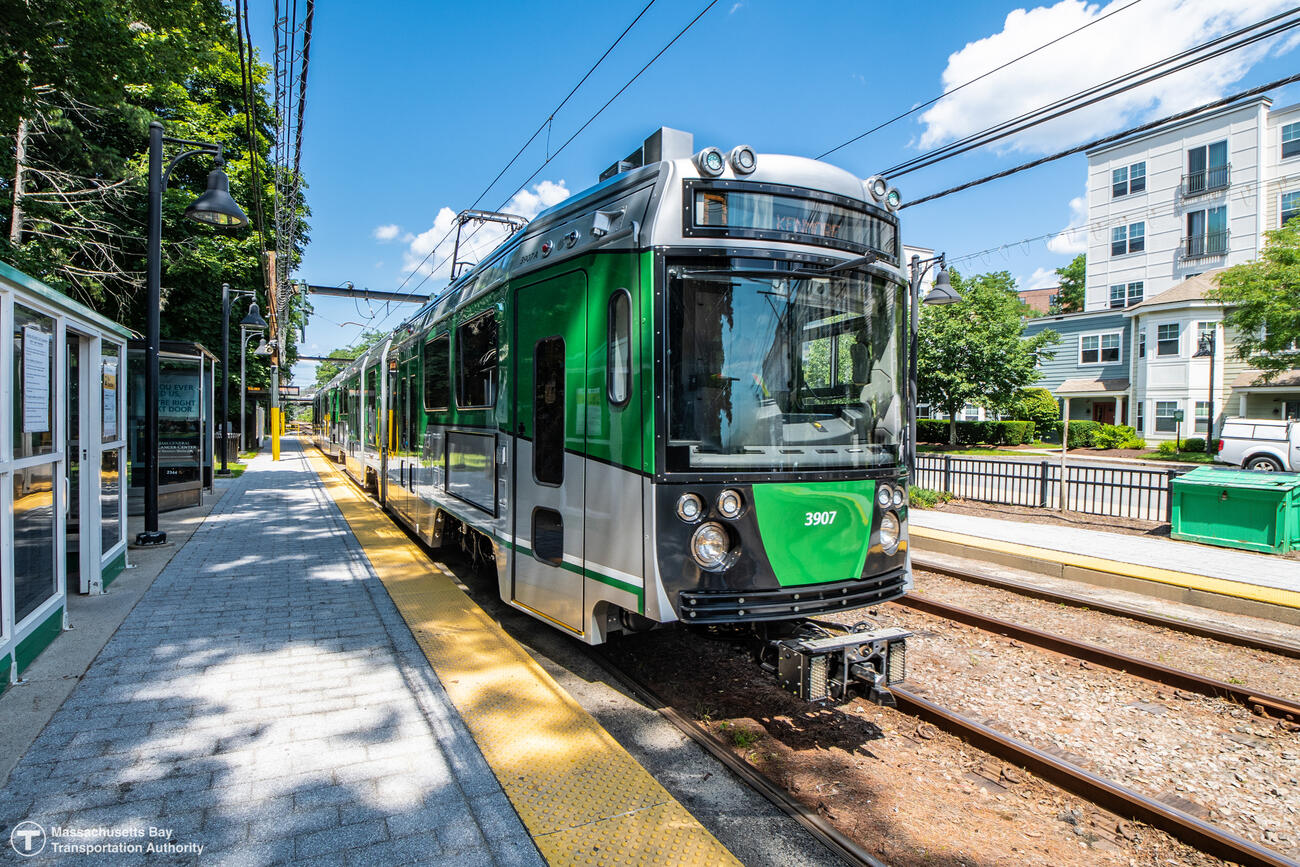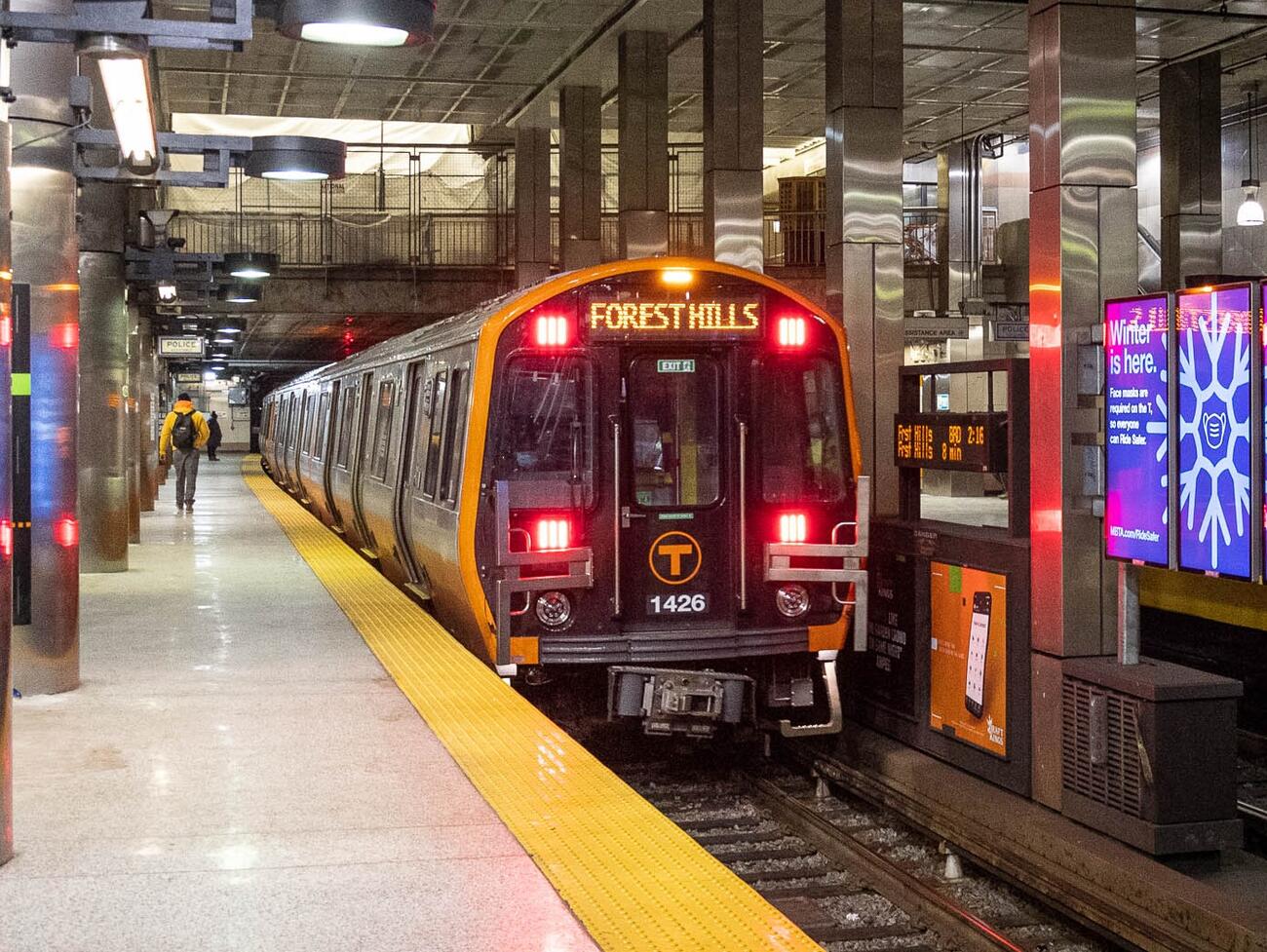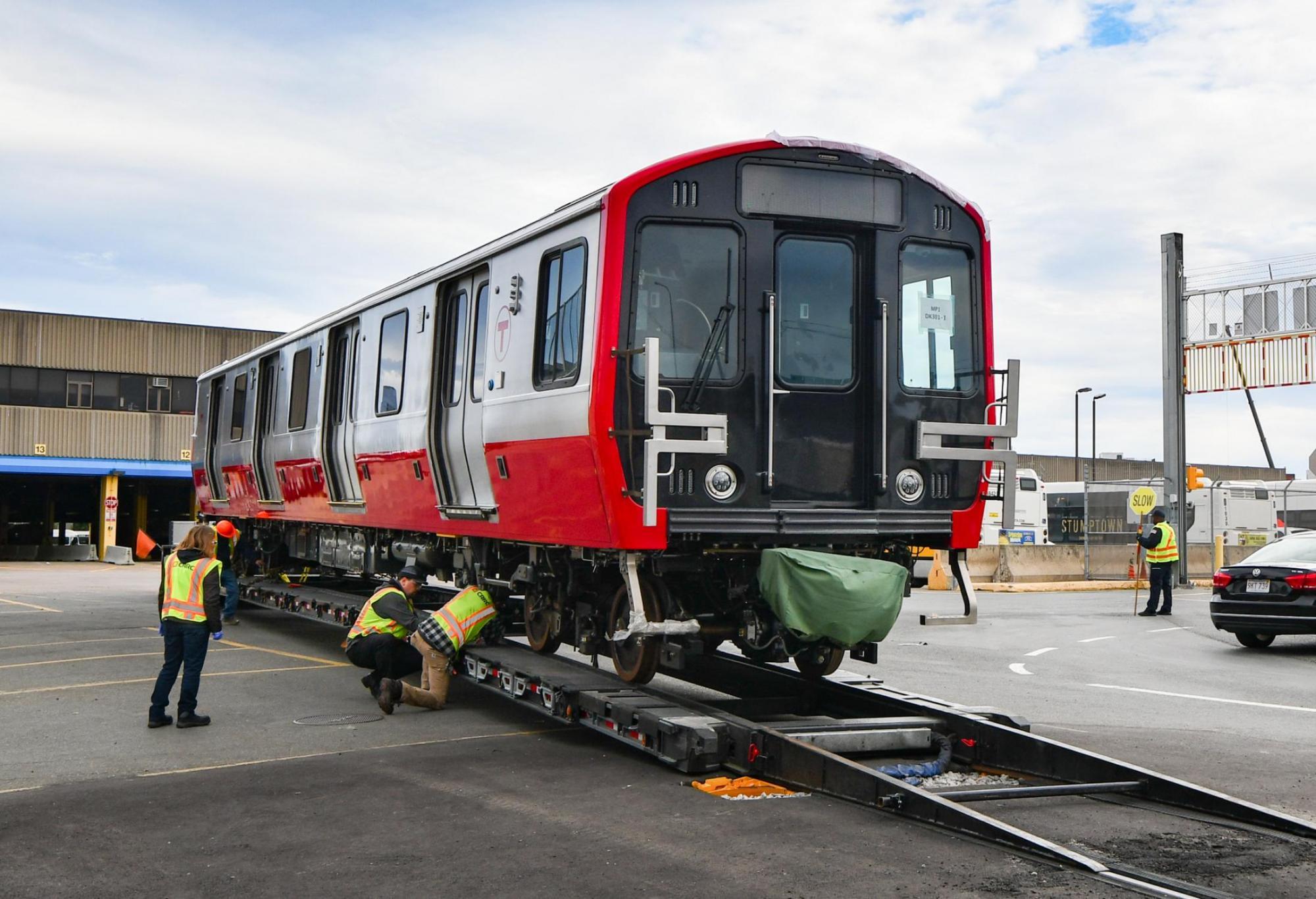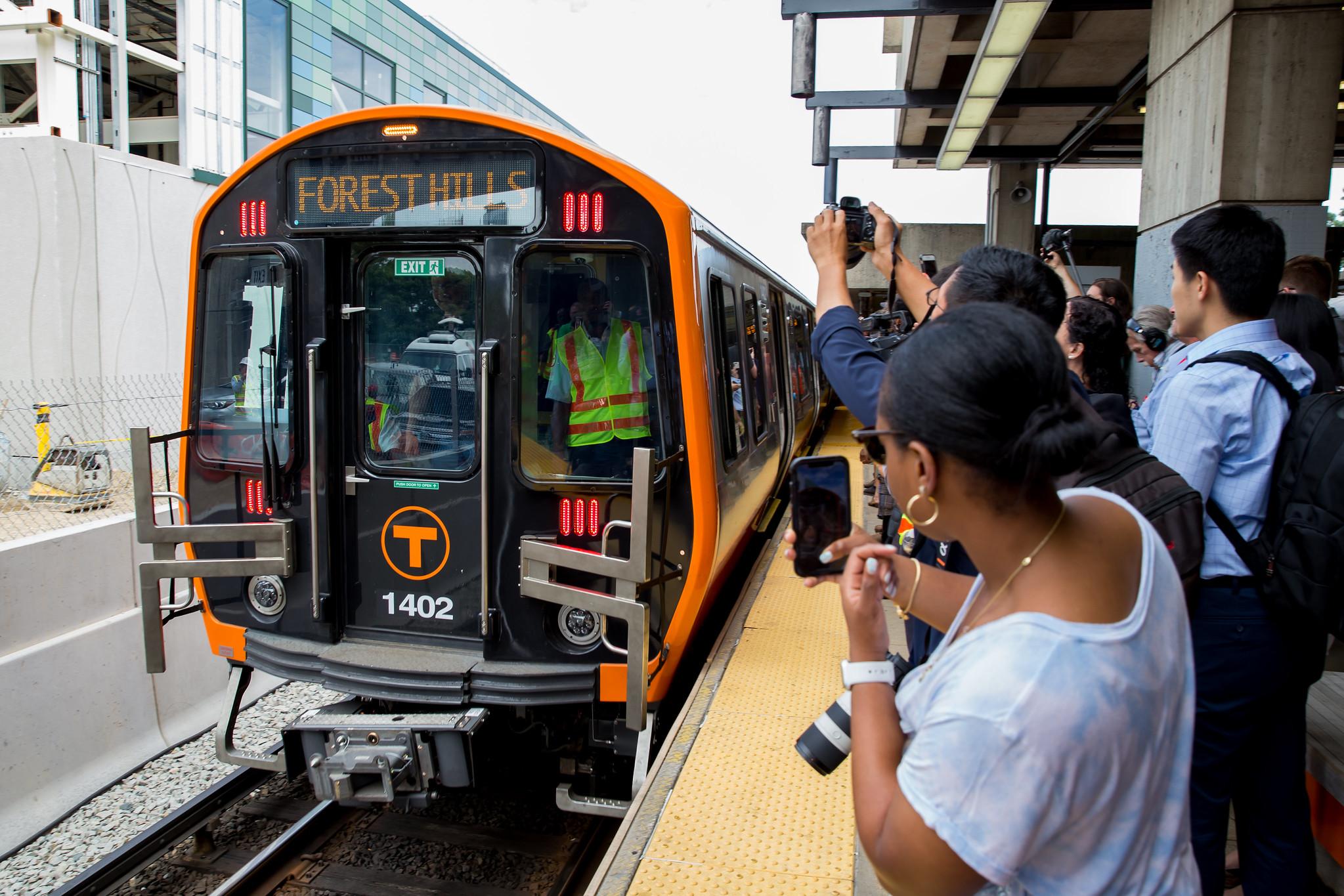Greening the Fleet: Decarbonizing the MBTA
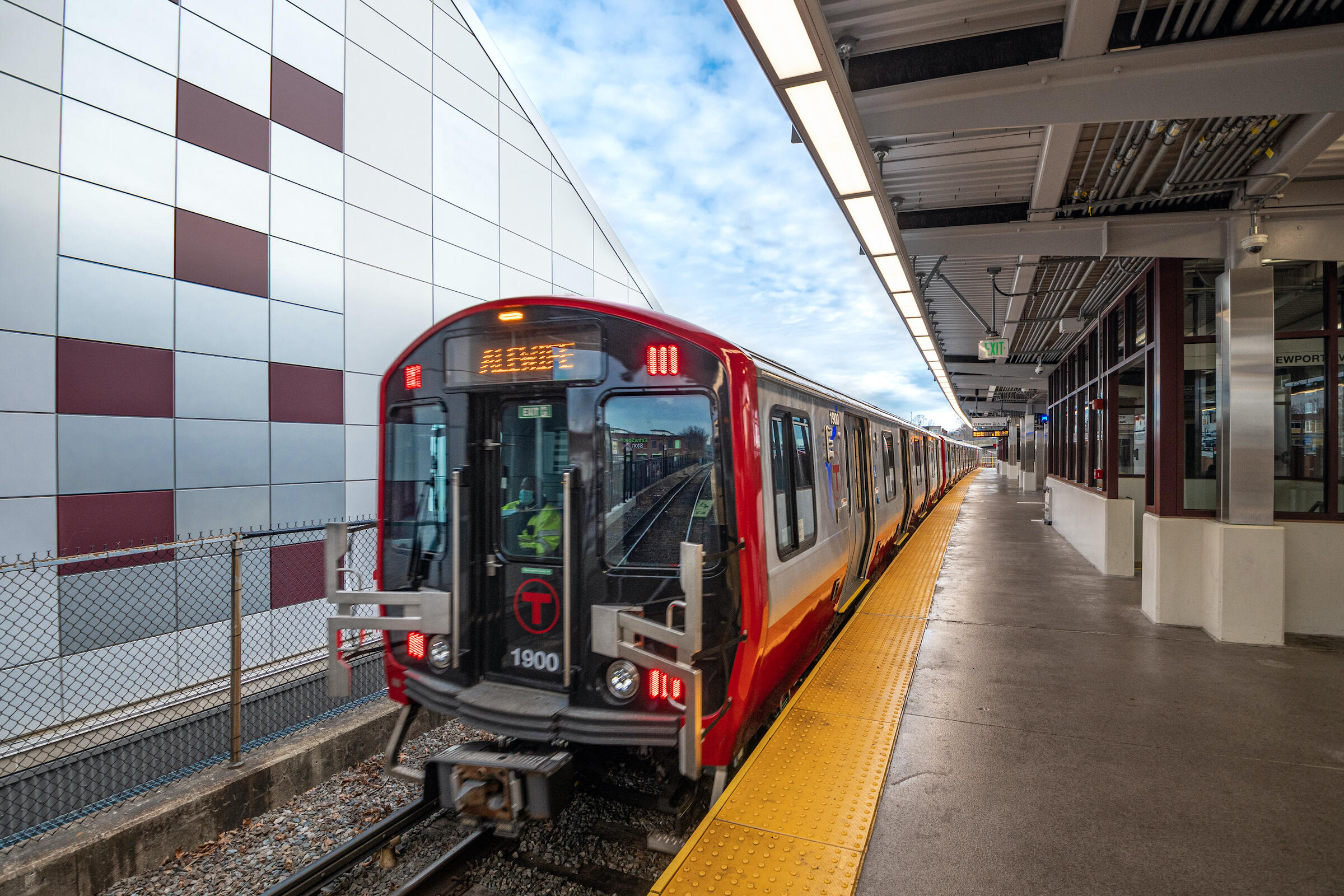
The MBTA provides a sustainable low carbon form of transportation for the region. However, the vehicles used by the MBTA can significantly impact the environment, both through the types of energy they use and the amount of energy needed to power them.
About 70% of the electricity used by the MBTA is "traction power" used to move the trains. The remaining 30% is used for things like lights, elevators, escalators, and mechanical equipment.
Our new and more efficient vehicles are an important part of our strategy to reduce our energy consumption and greenhouse gas emissions.
Building a Better T
As part of our $9.6 billion, 5-year capital investment plan, we're renovating stations, modernizing fare collection systems, upgrading services for our buses, subways, and ferries, and improving the accessibility of the entire system.
In 2019, the MBTA purchased five 60-foot Battery Electric Buses (BEB) for the Silver Line. These buses were specifically designed to operate with zero emissions.
The MBTA BEBs:
- Have a range of 60 – 110 miles on battery power in Boston traffic
- All-electric HVAC systems (other BEBs rely on diesel fuel for heat in the winter)
- Operate out of the Southampton Bus Garage, which is equipped with three 150kW plug-in chargers
As we consider expanding our fleet of BEBs, we will continue to evaluate the performance of these vehicles in different conditions (weather, road conditions, and more) as well as the evolution of the BEB industry.
The first diesel electric buses joined the MBTA fleet in 2010. They use approximately 25% less fuel than traditional diesel buses, or 1,200 gallons per bus every year. There are currently 480 hybrid buses in service—both the traditional 40’ length as well as the 60’ length.
There are plans to add up to 60 more hybrid buses to the fleet, which will allow the MBTA to retire older diesel buses that consume more fuel and generate more greenhouse gases.
Fuel-cell buses run on hydrogen and produce zero harmful emissions. The first fuel cell bus went into service in 2016, and a hydrogen fuel station was installed at the Charlestown garage.
Recently, the FTA sponsored a National Fuel Cell Bus Program to support public transit agencies’ development of fuel cell technology for bus fleets, and the MBTA worked with Nuvera to develop buses for our fleet.
This program was a beta test of an emerging technology that lasted for two years, during which we collected data on how the bus operated in real-world conditions, particularly in winter weather. While this prototype vehicle is no longer in service, the MBTA was able to provide critical data back to the vehicle manufacturer to help advance production of fuel cell buses for the transit industry.
In 2019 a new fleet of Red and Orange Line trains were launched. They all have a number of energy-saving features, including:
- Regenerative braking
- LED lighting
- Efficient HVAC systems
- Durable, sustainable body and mechanical components
A complete overhaul of Green Line vehicles was done in 2018. New trains feature updated lighting, efficient HVAC systems, and regenerative braking.
Regenerative braking captures and reuses the energy expended by a train as it slows down.
This braking system allows vehicles to use less energy, making them more efficient.
In its first pilot, regenerative braking at Airport Station on the Blue Line saved 250,000 kWh of power in one year.
Commuter Rail
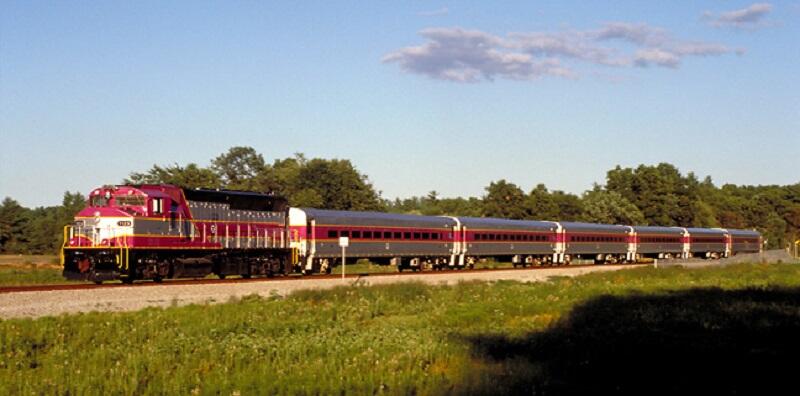
As the MBTA plans for the future of the Commuter Rail system, we are considering the transition from diesel locomotives to an electrified system.
Moving to an electrified system would help us further reduce our reliance on fossil fuels and reduce our carbon footprint.
The conversion would be part of a major overhaul of the entire Commuter Rail network and would require:
- Implementiation of new vehicles
- New and updated maintenance facilities
- New and updated power supply, electric catenary, and power systems
The MBTA has launched the Rail Vision program that will identify cost-effective strategies to transform the existing Commuter Rail system. The modernized system will offer improved mobility and support our efforts to reduce greenhouse gas emissions.
Related Projects
New Red Line Vehicles
The Red Line Program will support the all-new, expanded Red Line fleet of 252 modern vehicles.
Learn more about new Red Line vehicles
New Orange Line Vehicles
The Orange Line Program will support the expanded Orange Line fleet of 152 modern vehicles.
Building a Better T
As part of our $9.6 billion, 5-year capital investment plan, we're renovating stations, modernizing fare collection systems, upgrading services for our buses, subways, and ferries, and improving the accessibility of the entire system.
Related Projects
New Red Line Vehicles
The Red Line Program will support the all-new, expanded Red Line fleet of 252 modern vehicles.
Learn more about new Red Line vehicles
New Orange Line Vehicles
The Orange Line Program will support the expanded Orange Line fleet of 152 modern vehicles.
